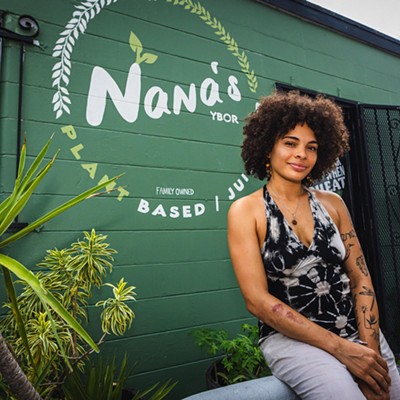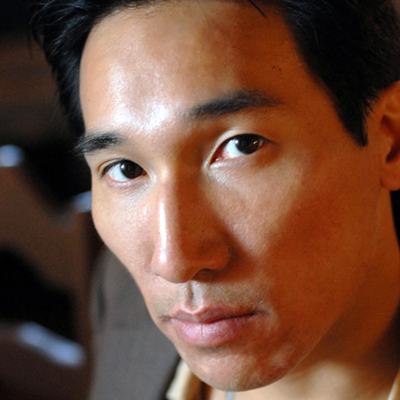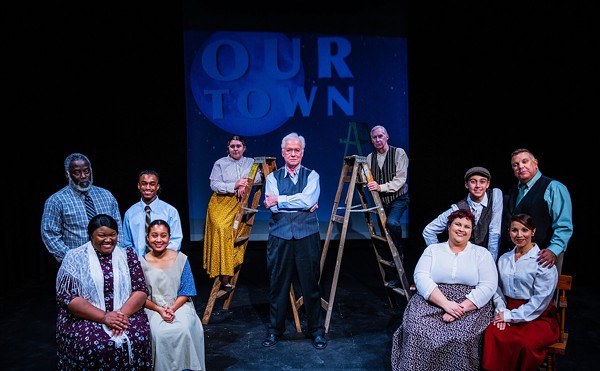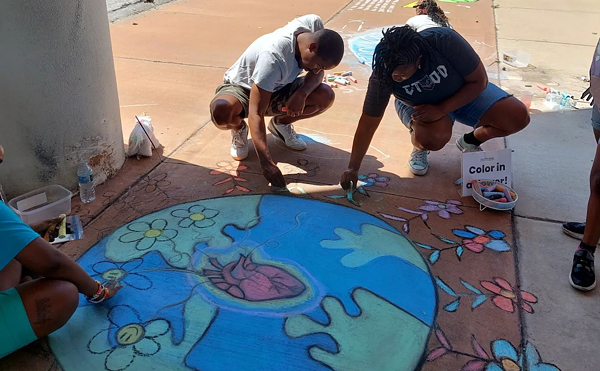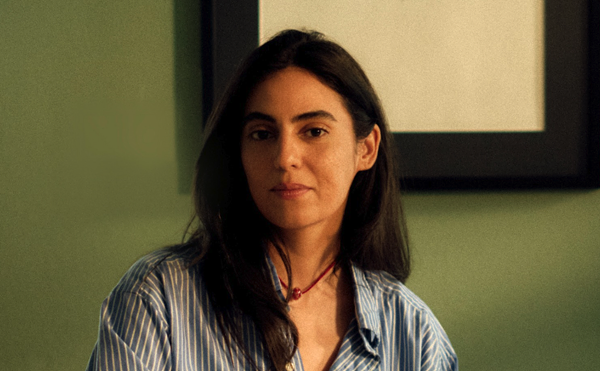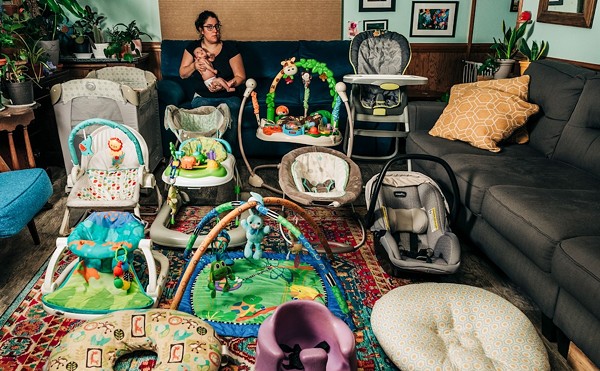Is it just me, or is the value of the arts too often called into question? Rick Scott wants to carve art programs out of schools, and when people find out I got my Master’s degree in creative writing, their faces wrench into polite, totally puzzled grimaces. I feel compelled to defend the vitality, and necessity, of these modes of expression: the performance that moves you to tears, the book that sets your child’s imagination on fire, the film that makes you see the world in a different way. Maybe Rick Scott doesn’t want you to know this, but art can, every once in a while, inspire us to be better human beings. And then a performance such as Synchrony’s Giving Voice comes along, and all my claims are justified.
From the vision of Rose Stauffer—a dancer, social worker, and therapist—Giving Voice is a modern dance performance depicting the journey that moves a person beyond trauma and abuse. The eight pieces in this original work traverse the stages from innocence and initiation, to wounding, living a lie, then making a decision to heal and survive. Synchrony, St. Pete’s own modern and interpretive dance troupe, was founded by Rose Stauffer, Michelle Fender and Missy Feathers. This original performance, set to the live music of Leslie Kille, will be Jan. 17 and 18 at The Studio@620 and will benefit CASA, an organization designed to help victims of domestic violence.
I got to speak a little more with Rose about her upcoming performance, leaps of faith, and other liberating things to do with one’s body. She’s lovely, sincere, and passionate about her art.
Giving Voice has a distinct message for social justice. How do you believe the arts can create positive, provocative change in our culture
I have long been fascinated by how the arts can be used for healing. Art is a gateway to other possibilities, and art inspires people to consider something they may never have considered before. So it has powerful potential for social and moral change. The process toward healing changes a person, how they think, behave, what they value, what they hope for, and believe. True healing brings a sense of empowerment.
This show spends more time on how the protagonist finds her way out of being abused, and into a place of safety and self care. I want the show to give hope to people still suffering from their wounds, whether from physical, sexual, or psychological abuse, domestic violence, or bullying, to know there is a way out of that world. I would like this show to give permission, if you will, to allow yourself the conviction it's time to stop letting others abuse you.
Giving Voice seems to be the intersection of dance, movement, and narrative. How did this cross-section of art forms come about?
When I first performed the show as a solo performance, I loved the idea of making it a dance, and not a play, because the non-verbal aspect allows the expression of difficult themes without having to talk about them, and the audience can simply absorb the truths and the messages with their senses. And with their hearts.
Sexual violence in particular is a trauma with such intimate, personal violation, and the experience is unspeakable, in my opinion, because it shatters a person’s spirit and physical body. Dance seemed the right vehicle since the body is the medium, to convey this difficult subject matter in a respectful and honest way. I do a lot of acting with my face and body, but I wanted the show to be open for interpretation as well, and dance has a way of expanding those edges because it is a more abstract art form. Each person's trauma and healing journey is different.
After I did the solo show, I knew I was ready to grow the project. Michelle Fender and Missy Feathers both embraced the show as their own, and helped re-stage the eight dances. We are adding a brief narration in between the dances, along with stylized music. I wanted to make sure it unfolded like a short story, with a beginning, middle, and end.
The transformation from trauma to healing is powerful, and seems to speak to you very deeply. How were inspired to create Giving Voice?
The title of the show, Giving Voice, is the muse for me. Traumas against the body, and sexual violence in particular, are ensconced in silence and shame by the victim. At first the silence is imposed on the victim by the abuser, but then carried by the victim throughout life. So unless the person decides not to bear the shame alone, and breaks the silence, it will manifest in dis-ease of every kind. The hardest thing to do is to step out of the darkness of living the lie and asserting one’s story to others.
In my personal life and professionally, as a clinical social worker and therapist, I see the only way out of suffering is to take that leap of faith, over the “cliff” if necessary. It’s amazing what happens if we do that. I’ve taken several leaps off the cliff in my lifetime, and it’s always led to something incredible. So in a way, creating this show and dancing it in front of an audience, with all its foibles and imperfections, is a metaphor for what it takes to heal.


